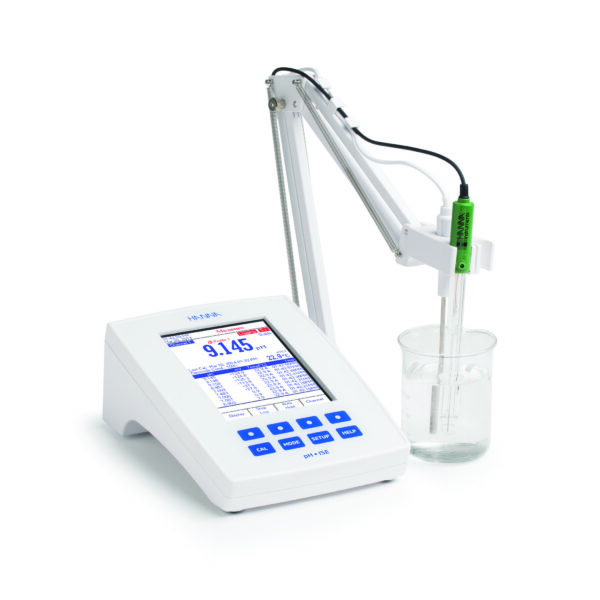In hospitals, intravenous (IV) solutions, such as saline or prescription drugs are commonly administered to patients for various therapies. IVs are used to deliver medications, replace fluids, balance electrolytes, and many other treatments.
Since the solutions are introduced directly into the blood stream, the more similar in ionic strength the solutions are to the blood, the less likely there will be negative health impacts. Tonicity and pH are the two most important factors when making a solution that mimics blood composition.
Tonicity and pH are the two most important factors when making a solution that mimics blood composition. Tonicity, which is the osmotic pressure of a solution, refers to the ability of water to pass through a semi-permeable membrane, such as found in a blood cell. Water moves from low concentrations to high. The movement of water from within a blood cell to the blood is largely based on the concentration of dissolved ions in solution, which is referred to as osmotic concentration.
When isotonic (iso = same and tonic = strength) solutions such as medical saline solutions are intravenously introduced into the blood stream, there is no osmotic pressure. This results in a negligible amount of water moving in and out of the blood cells.
If the IV solution is hypotonic, it is lower in salt concentration than that of blood and blood cells. The hypotonic saline solution will lower concentration of ions in the blood and create a concentration gradient. This results in water moving into the blood cells, where they will swell and possibly rupture. Hypertonic solutions have a higher ion concentration than blood, and this concentration gradient will cause water to move out of cells, causing them to shrink. When formulating IV medications, salts such as sodium chloride and potassium chloride may be added to the active drug to ensure the solution is isotonic.
Another important consideration when preparing IV medications is the pH. The human body utilises a bicarbonate buffer system which keeps our blood at a nearly constant pH of 7.35. The ability to maintain homoeostasis of our blood is critical, since abrupt changes in its pH can result in bodily shock or shut down. IV solutions with values of less than pH 5 or greater than pH 9 have been known to kill blood cells upon contact, which has a significant negative health impact for patients. The best results in patients have been seen with IV solutions between pH 7.0 – 7.4. The pH of an IV solution also affects the stability of the active drug component, as well as its shelf life. Most drugs have the longest stability at acidic pH values. Taking all of this into consideration, most IV drug solutions are made between pH 5 and pH 6 for maximum stability while ensuring there are no significant health impacts. The high buffering capacity of our blood pH ensures that there are no dramatic changes as the IV solution is flowing into the blood stream.
Application
A pharmaceutical research company contacted Hanna Instruments to inquire about measuring the pH of their IV drug solutions. They were conducting a study to determine the stability of the drug solutions at different pH values, different drug concentrations and different tonicities. Since they were taking frequent measurements with a limited sample volume, they were performing their pH measurements in 100 μL pipette wells.

Our solution
Hanna Instruments offered the HI5222 Professional Benchtop pH/mV/ISE meter. This product was appropriate due to the 0.001 pH resolution and option to calibrate to custom buffers.
For their research, the company was calibrating to two points, utilising the custom buffers to calibrate to +/- 1 pH unit of their target pH. The company was able to view the GLP data to ensure that the slope and electrode condition was ideal within their necessary range. This assured them that their measurements were accurate.
The GLP data was also included in their logged data reports so they could easily refer back and have detailed records of their measurements. The customer appreciated that the GLP data was customisable and allowed them to input an “Operator ID”. They also utilised one of the “Additional Info” fields to include a sample batch name.



